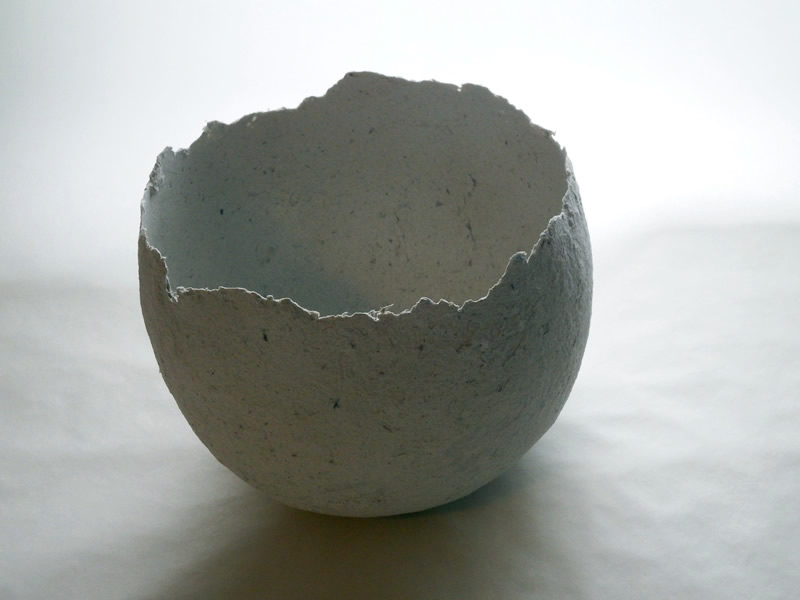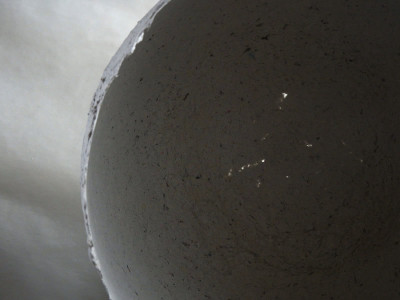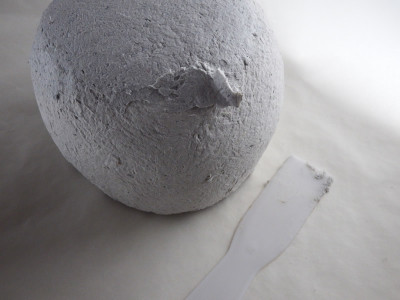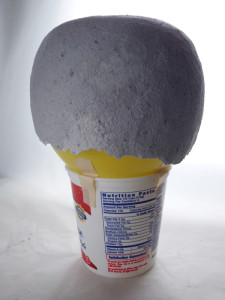
When you work with papier maché clay, it can take awhile to get a feel for how thick you’re spreading the mixture over the mold. Too thin and it’s fragile, most likely with weak areas and pinholes. Too thick and you lose some of the delicacy of it.
A thickness of about 1/8″ (.125 cm) is sturdy yet not clunky. The photo above was taken before patching, when the sides were a bit too thin and there were pinholes in the bottom from flattening the base.
No wonder there are issues… it’s like spreading really wet tuna salad! Thankfully there’s an easy fix.

From this perspective, you can see where it needs to be patched. The sides could use some reinforcing too.
I always set aside some extra papier maché clay when I make a bowl, for this purpose. I haven’t made one yet that didn’t need a little touchup.
Just like when making the bowl itself, you spread the clay mixture over the surface of the bowl, with whatever kind of spreader (putty knife, frosting knife, old credit card, fingers). Holding it up to the light helps you see what you have left to do.

If there are places you don’t need to patch, the maché clay feathers very nicely into the dry surface.
For building the bowl, the suggestion about wetting the spreader to smooth the clay (from ultimatepapermache.com ) is a helpful tip. For patching, though, I would avoid it.
The dry material tends to absorb the moisture and it can distort the shape of the bowl. You shouldn’t need to do this anyway. It spreads and smooths very readily. And there’s always sanding.

This bowl seemed to need a complete second coat, meaning it would probably warp.
After completely covering it with patch material, I inflated another balloon inside the bowl and reattached it to the container I used to make it.
It dried a lot faster that the first layer, since that absorbs some of the moisture and because I didn’t tightly inflate the balloon.
There’s some air space between the balloon and the bowl, but it’s still big enough to help the bowl hold its shape.
I also wanted to keep as much of the flattened base as I could. This means not having to do as much sanding, possibly creating new weak areas in the bottom, make feet or an additional base for the bowl.